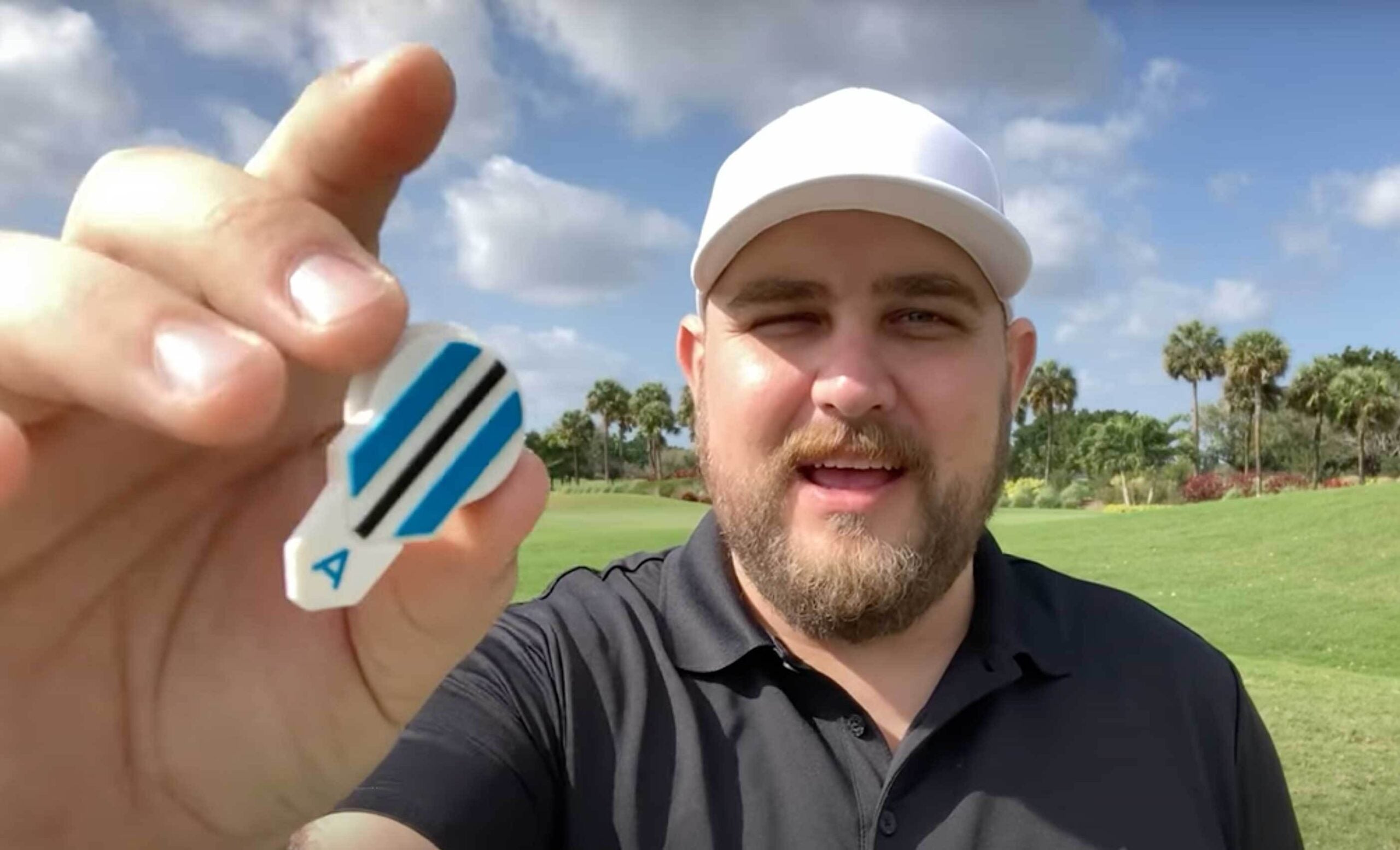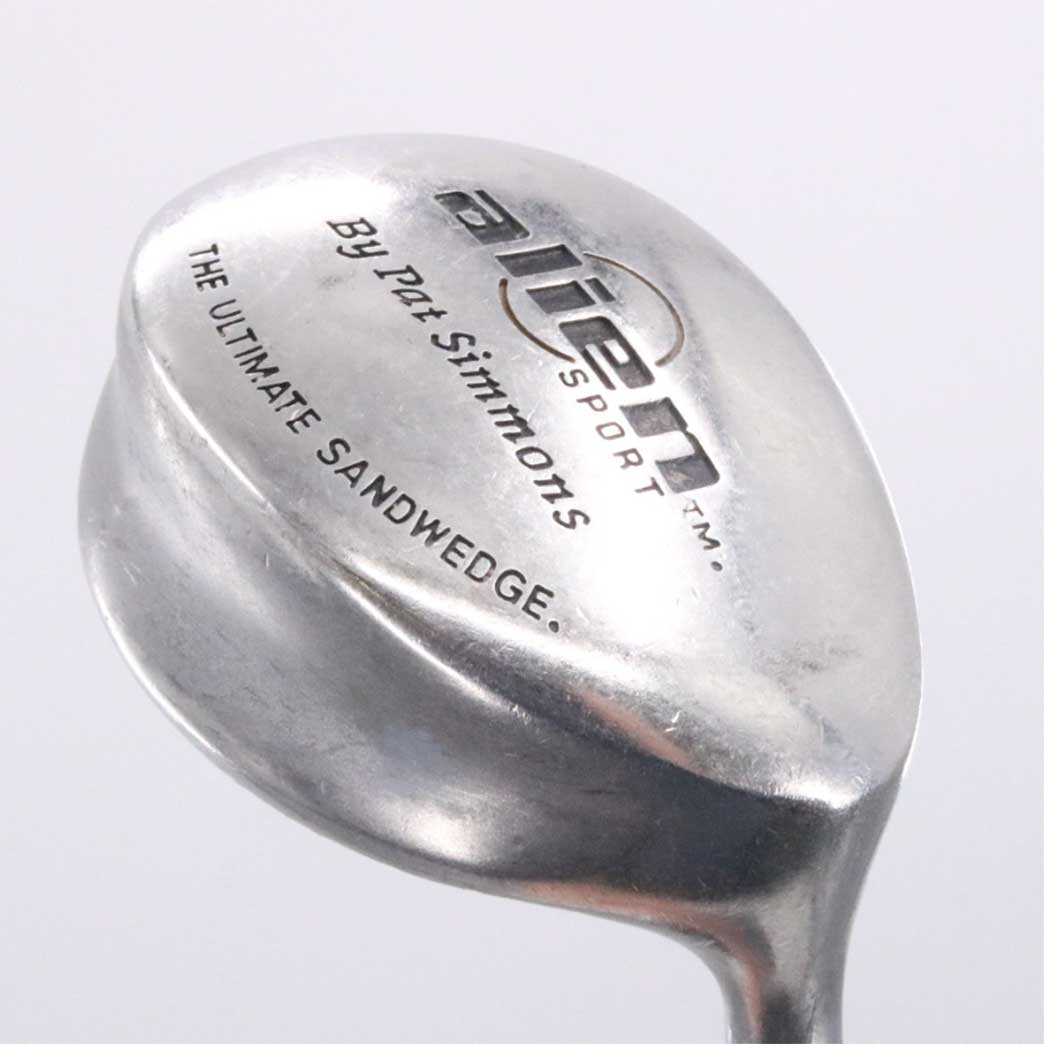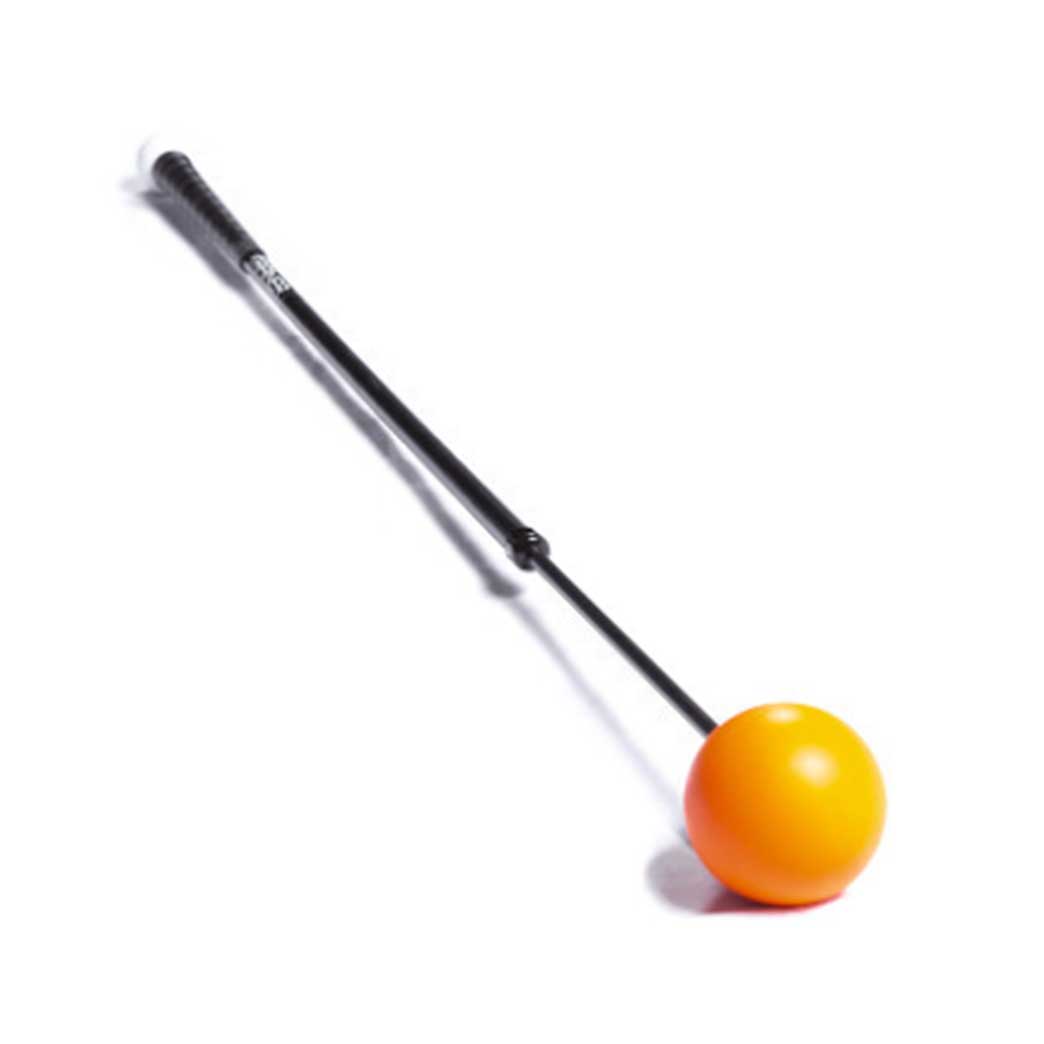
Jeff Gardner, a graphic designer from New York, invented the Alignment Ball Mark.
Courtesy Photo
From the moment Scottish shepherds in the Middle Ages started whacking rocks toward targets with crooked sticks, golf has been a wellspring of innovation. Tinkering has never been restricted to the range. Every year, countless would-be Eli Callaways arrive at ideas for new putters, pushcarts, swing aides, moisture-wicking socks, you name it. Inspiration can strike anywhere, anytime, giving rise to — who knows? — an Orange Whip, a Medicus, an Alien Wedge.
And yet conceiving of a golf product is not the same as bringing it to market. Few people know this better than Jeff Gardner, a graphic designer from New York and inventor of the Alignment Ball Mark, a patent-protected, USGA-conforming two-piece ball mark with a rotating top that does precisely what its name suggests: It makes it easy for golfers to set up for putts by aligning the markings on their ball with the marker itself, without having to back off and double check the lines.
In the nearly four years since he dreamed up the device, Gardner has spent hundreds of thousands of dollars — including the cost of his own time — on everything from prototypes and sales pitches to legal fees and overseas production runs. Along the way, the Alignment Ball mark has earned kudos (it was named Best New Product at the 2022 PGA Show, in Orlando) and made it into thousands of golf bags and shops around the word, but not without hiccups. As Tiger Woods might say, it has been a process. And an education. This past week, as the 2023 PGA Show was wrapping up, we asked Gardner and other industry experts for insights into what it takes to get a golf invention off the drawing board and onto shelves.

Courtesy Photo
1. Be proactive
After winning Best New Product at last year’s industry trade show, Gardner was giddy. “I figured buyers would be beating down my door,” he says. Back home in New York, though, the only thing he received in the way of outreach was a cease-and-desist letter (more on this later) from a guy who’d invented a product in a similar category, claiming that Gardner’s logo was too much like his own. The lesson Gardner learned was to seize the initiative. “It’s on you to get your message out there,” he says. “Customers aren’t going to come looking for you.”
2. Target an audience
As president of the United Inventors Association (UIA), Carmine Denisco sees all kinds of things go right — and wrong — with golf inventions. One pitfall he says, is that inventors tend to think in absolute terms. “They think a product is either going to be for everyone or for no one,” Denisco says. But when you try to talk to everyone, no one listens, and you miss out on smaller markets that are still plenty large enough to make you a success. “If you can keep it targeted, like, ‘This is for female golfers, 35 to 60, who have just started, that really helps you launch a product,” Denisco says.
3. Avoid saturated spaces
As a sport that doubles as a lifestyle, golf lends itself to advents in a range of categories — equipment, apparel, game-improvement, etc., some of which are more competitive than others. Do your research, Denisco says. Cinderella stories happen. But they’re rare for a reason. And you want to know who — and what — you’re up against. “As a general rule,” Denisco says, “you should try not to invent into a saturated market.”
4. Start at the retail price and work backward
When Gardner first dreamed up the Alignment Ball Mark, he figured it would retail for about $10, and he worked on his design with that number in mind. That’s a critical step that inventors often skip, says Mark Ziminsky, a 30-plus year veteran of the golf merchandise business.
“If x, y and z products in a similar category are selling for $10 and your cost basis means you have to sell yours at $20, you’re not going to make it,” Ziminsky says. Start with a retail price and work backward, accounting for all your projected costs. Remember, lots of people are going to need a cut: manufacturers, distributors, sales reps, shop owners. Calculate your marketing expenses, too. If the numbers don’t add up, you’ll need to recalibrate your plans.


Courtesy photos
5. Pick your battles
When he received a cease-and-desist letter from a fellow inventor complaining of similarities in logo design, Gardner had two choices: hire a lawyer or tweak his logo. After weighing the risks (what if he shelled out for attorneys and still lost in court?), Gardner settled on the safer, simpler option and made some easy alterations in design. The takeaway: You can win long term without taking up every fight.
6. Study the finer points of patents
A patent is protection for your idea. Whether and when you need one is another matter. You might not. At least, not right away. A common misstep, UIA’s Denisco says, is to jump the gun and shell out for a patent before all the details of the invention are dialed in.
“What’s it going to be made of? Where is it going to be made? How, exactly, is it going to function?” Denisco says. “If you get a patent before you know the answer to those kinds of questions, you or your developer are going to have to work around that patent. There might be ways to do it better or more cost-effective ways to do it, but you won’t be able to because you’ll be constrained by the patent you already paid for.”
In the early goings, Denisco says, a provisional patent is often the better option, as it can safeguard your invention for up to a year for about $85, far less than the thousands (and sometimes tens of thousands) that attorneys charge for a full patent claim.
Will you wind up needing that longer-term protection? Depends.
Different products call for different safeguards. In some cases, Denisco says, you might be better off trademarking the product, so no one else can take the name. A lot can hinge on the category (in fast-changing industries, like apparel, patents aren’t as common) and how you plan to use your invention. If you hope to license it, Denisco says, you’ll probably want to get a patent, as potential licensees will want that assurance.
When people say a product is patent protected, they’re usually referring to a utility patent. That’s what Gardner got for his Alignment Ball Mark; he wanted to protect what he saw as his invention’s unique function. But there are also design patents, which, Denisco says, are increasingly popular in the age of online shopping, as they’re easier to enforce than utility patents. “If someone knocks off your product on Amazon, it’s pretty easy to see the infringement. You can make your case over the phone. It’s not as hard to get it taken down.”
7. Understanding sales and distribution
You say you’ve got the greatest golf invention since the sand wedge? Maybe so. But good luck making sales by cold-calling pro shops and big-box stores. Like most sizable sectors, the golf industry is home to a large network of sales reps, distributors, and other intermediaries.
“Most buyers at golf shops don’t have time for one-trick ponies,” Ziminksy says. “If your math depends on you knocking down the doors at stores or golf shops, you might want to think again.” For an outsider trying to break in, figuring out how it all works can be a steep and frustrating learning curve, which brings up one final tip.
8. Be patient and diligent
Do your research, and brace for a grind. Expect to place a lot of calls and send a lot of emails that go answered. Count on running into hurdles. “At some point along the line, I can guarantee you that some problem is going to come up that you never could have imagined,” Gardner says. “You’re going to beat your head against the wall. You’re going to get frustrated.”
Sounds a bit like the game itself.











